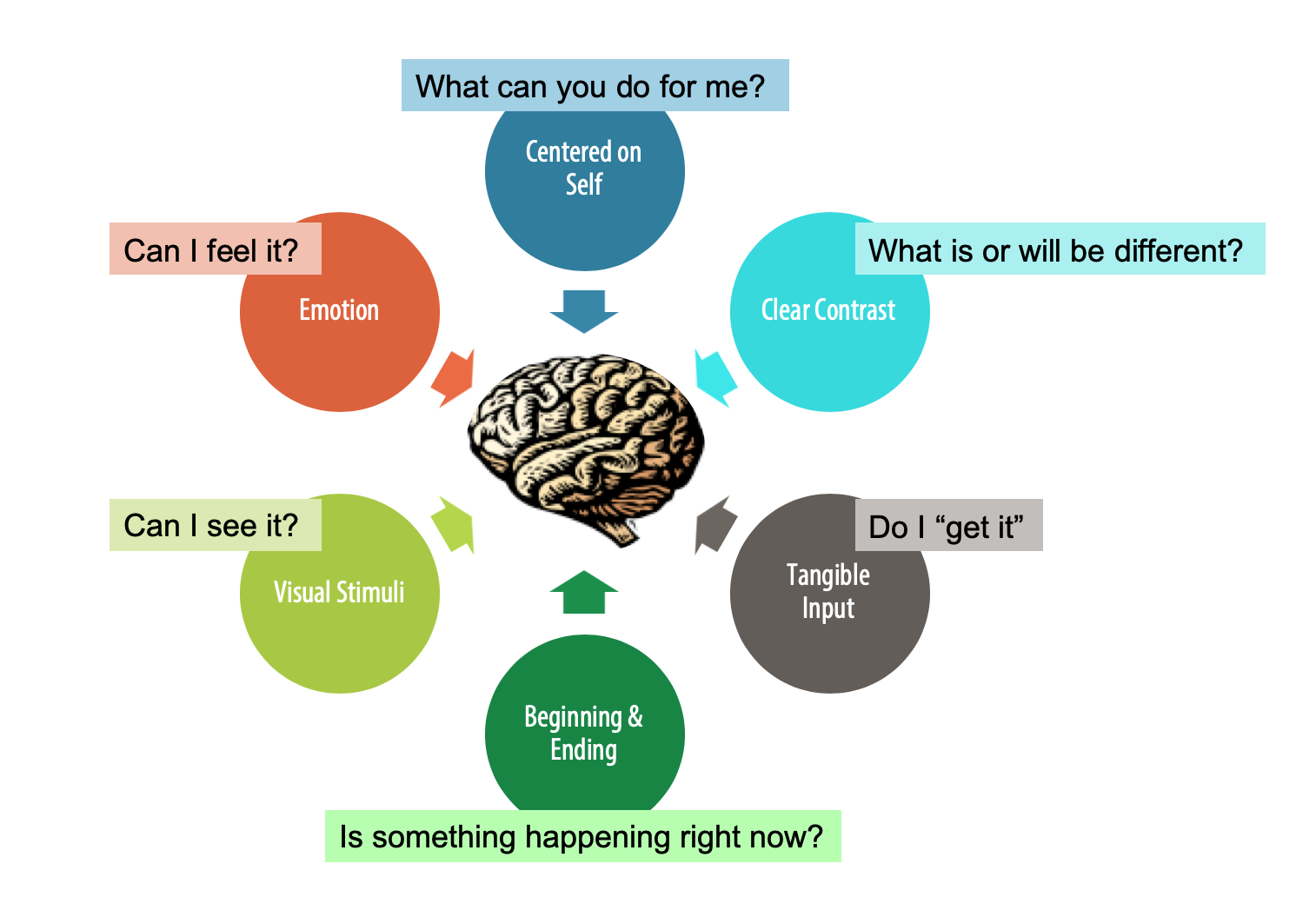
This is How to Use Brain Research for Volunteer Recruitment
If you’ve been wondering why your volunteer recruitment ideas aren’t working, you’re not alone. Year over year, it’s the #1 issue raised by those who take our Volunteer Management Progress Report survey.
The fact is that years ago, it was relatively easy to put up flyers, post in the newspaper, ask around, and you’d have enough volunteers to meet your organization’s needs.
Alas, times have changed. Your community members are bombarded with information – seeing as most people carry a smartphone in their pocket. They may passively read and follow more media than ever before, but may not engage as often.
So, you’ve got to stand out with a better, more thoughtful approach to your volunteer recruitment ideas.
The good news is not only is there a keen interest in volunteering as of late, we also know more than we ever have about how to capture the attention of an audience by better understanding how the brain works.
Reaching Overwhelmed People in a Busy World
In recent years, scientists say behavior is often pre-programmed. In fact, the relatively new scientific field of behavioral economics is built on this premise.
Rather than rational considerations, the human brain is hard-wired to make certain choices. This is, in part, because we cannot process all of the information coming at us each day.
In fact, while our brains can receive 11 million bits per second for processing, the conscious mind can only process only 50 bits per second.
So, in today’s multi-media world, our cognition is severely limited.
Not to mention that our brains are lazy. In fact, our brains will instinctively forget things to conserve the energy needed for “survival.”
We also conserve energy by reacting in “stereotypical” or pre-determined ways based on what external and internal cues tell us, in shorthand, about our circumstances.
Researchers have found that the following six principles guide the brain’s behavior …
- Centered on Self – The old brain is completely self-centered.
- Clear Contrast – The old brain is sensitive to clear contrasts; in fact, it is always scanning our surroundings for disruptions in the norm.
- Tangible Input – The old brain processes information very quickly, and if waylaid, will forward the info to the new brain.
- Beginning & Ending – The old brain conserves energy by focusing on beginnings and endings.
- Visual Stimuli – The optic nerve is forty times faster than the auditory nerve, and so it feeds info to the old brain much faster. Because of this, humans are hardwired to make decisions largely based on visual input.
- Emotion – The old brain is triggered by emotions and remembers events better when they are accompanied by strong feelings.
How to Light Up the Brain of Any Audience

Volunteer Recruitment Ideas that Break Through the Noise
Working against human nature is like trying to stop a waterfall. Research shows us we are hardwired to behave in certain ways.
So, why not work with the instincts of your audience instead of against them?
Here are six specific actions you can take to beef up your volunteer recruitment ideas and specifically address the hidden agenda of the human brain.
Action 1: Keep Your Appeals Centered on Volunteers, Not Your Agency
- Explain direct rewards, use the word “you” throughout your messages
- Use volunteer-centric language, focus on how they will impact the cause, appeal to specific audience segments
Action 2: Communicate Clear Contrasts
- Paint a picture of before/after and us/them
- Use power words — the most common are You, Free, Because, Instantly or Immediately, and New
- Describe what happens with volunteer support versus what happens without volunteers
Action 3: Make Sure You Offer Tangible Input
- Communicate simple, concrete ideas
- Avoid jargon and insider speak
- Describe simple steps to join
- Don’t overwhelm with detail; instead link to deeper info
Action 4: Focus on Beginnings & Endings
- Focus on first touches: strategically place messages
- Create urgency by rotating volunteer openings and framing opportunities as time-limited (e.g., upcoming training dates, etc.)
Action 5: Use Lots of Visual Stimuli
- Use compelling photos and video on your web page, newsletters, and social media
- Use close ups of smiling faces of real people (with permission), not stock images
- Include a caption, if possible
Action 6: Don’t Be Afraid to Share Emotional Content
- Share powerful stories of positive transformation, don’t be afraid to be emotional
- Use testimonials from volunteers and those affected by their work (don’t edit; in their own words)
Finally, remember your audience will be looking for answers to many unspoken questions about your organization, as well.
So, include values-based content and recruitment messaging: “Does this organization share my world view, and is it filled with people I can trust?”
Volunteer-Centric Communications
There are plenty of inspiring examples online of organizations that are getting it right in terms of volunteer-centric communications.
Here are some of the kinds of posts that will grab prospective volunteers’ attention and interest:
A customer or volunteer Story
– focused on client results (before & after)
For more inspiration and ideas, see: @makeawish

An emotional volunteer’s story
– to give volunteers hope they can make change happen (emotions).
For more inspiration and ideas, see: @redcross

A special day or celebration
– so it’s not always just about you (tangible input).
For more inspiration and ideas, see: @thompsonisland

A surprising statistic or infographic
– to educate them a little at a time (visuals).
For more inspiration and ideas, see: @bestfriendsanimalsociety

As you can see, none of these posts take expert copywriting skills or “Mad Men” level advertising chops. All you need is a smart focus on human behavior and what makes us all tick.
Does Your Volunteer Recruitment Work with Human Nature or Against It?
How would you rate your current volunteer recruitment ideas?
Are they brain-friendly?






